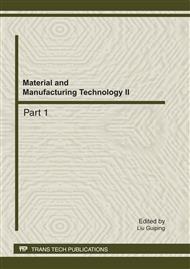p.215
p.221
p.226
p.231
p.242
p.247
p.252
p.256
p.261
Applying Elastic Unfolding Technique in Nonlinear Inverse Finite Element Method for Sheet Forming Modeling
Abstract:
A simplified efficient finite element method called the inverse approach (IA) has been developed to estimate initial blank and strain distribution in sheet metal forming. This algorithm is an inverse method since the position of points in final shape is known and their corresponding position in the initial blank should be determined. This approach deals with the geometric compatibility of finite elements, plastic deformation theory, and virtual work principle. This method often based on implicit static algorithms, sometimes causes convergence problems because of strong nonlinearities. This paper introduces an initial guess to speed up the convergence of Newton-Raphson solution. The application to a sheet forming example shows good agreement between forward incremental and IFEM results.
Info:
Periodical:
Pages:
242-246
Citation:
Online since:
September 2011
Authors:
Price:
Сopyright:
© 2012 Trans Tech Publications Ltd. All Rights Reserved
Share:
Citation:


